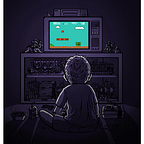Ethical Challenges in AR / VR
Today the world of technology advanced on an enormous scale: drones, machine learning, 3D printing, robotics, and mostly, what will be addressing today, augmented reality (AR) and virtual reality (VR).
But before starting this blog it is necessary to know what these two great technologies are.
Augmented reality:
AR experiences are pieces of software that mix real world environments with virtual elements, which are commonly designed to expand the limits of reality; giving the user the possibility to interact with or visualize real elements with virtual information or virtual elements within the real world. These experiences are commonly created for phones or simple devices and can be easily downloaded by the users.
Virtual reality:
Virtual reality (VR) is a technology that allows the user to experience a complete immersion within a digital environment. And is always -at least until now- developed for specialized hardware in running this kind of software. The most popular and accessible one is Oculus Quest 2, a device released by Meta in October 2020.
What are the differences between these two?:
At first, these may be quite similar but the truth is that they are not. The main difference is that VR gives you the possibility to immerse the user in virtual worlds. While augmented reality superimposes virtual objects on the real world. In other words, AR offers information in a virtual way about the real world and, on the other hand, virtual reality takes the user to a “parallel world”, where everything is 100% fictitious.
Without further ado, it’s time to question.
What are the advantages of these technologies?:
- Virtual reality can be used for educational purposes.
- Augmented reality can provide practical and captivating information that is superimposed on a real-world scene through a device.
- Medical techniques can be applied in virtual reality, like in the case of surgeries. This is useful so that the doctor is prepared before entering the operation.
What are the disadvantages of these technologies?:
- Abusive use of virtual reality can lead to sensory disorientation.
- While virtual reality can be a great asset for most of the existent fields, it can also be a huge disadvantage. Traditional education is based on personal human communication and interpersonal connections. Virtual reality is quite different, it is a solo experience. This can damage the relationships between students and the overall human communication.
In this environment it is possible to achieve many things, there are no limits in these areas of technology. It is our responsibility as developers and to the future programmers to get on the right track with these powerful technologies. Let’s improve everyone’s experience and be inclusive of all users.
The future depends on us.
